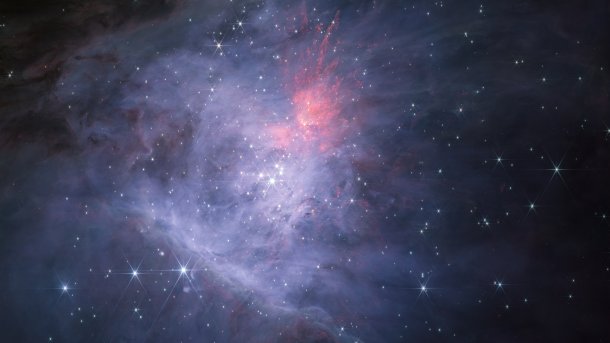Astronomy: Solitary planet pairs seem far more common than thought
After a whole series of exoplanets were discovered in the fall, traveling through space in pairs but without a star, there is now a theory about their origin.

The pairs of planets were discovered in the Orion Nebula.
(Bild: NASA, ESA, CSA/M. McCaughrean,S. Pearson – CC BY-SA 3.0 IGO)
Pairs of large exoplanets traveling through the galaxy without a star could be much more common than previously assumed. This is the result of simulations of interactions in star clusters that were carried out after a surprise discovery in the fall. The result is that stars passing comparatively close to each other can "spontaneously pull pairs of gigantic planets out of their star system", whereupon they continue to orbit each other in free space. This indicates that planetary systems are even more diverse than previously assumed. From the characteristics of their orbits around each other, the "violent" circumstances of their removal from their original home can still be deduced later.
More diversity than previously thought
The potentially new class of "distant and mysterious free-floating planets" was discovered in the fall with the James Webb Space Telescope. It appears that these "Jupiter-mass Binary Objects" (JuMBOs), or "binary objects of Jupiter mass", only orbit each other and not a star, writes the University of Nevada, where the analysis has now been carried out. This contradicts the prevailing theories on how planetary systems should work, the research team adds. The extensive simulations have now provided a possible explanation and would close a critical gap in our understanding of planetary evolution.
The "groundbreaking" work introduces dynamic interactions between stars as another factor in the formation of unusual planetary systems, says the research team. The work will also make it easier to search for them to test the new hypothesis. The work has now been published in the scientific journal Nature Astronomy. The original discovery of hundreds of celestial bodies not bound to stars in the Orion Nebula was published in a research article in October. Of 540 candidates with a mass suggesting planets, almost ten percent were not traveling alone. This aroused interest in the origin of these objects.
(mho)